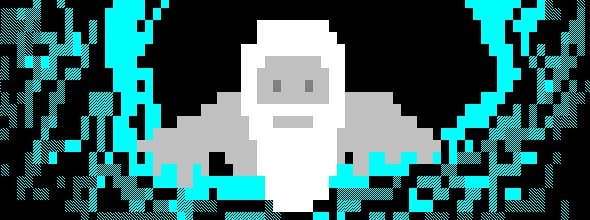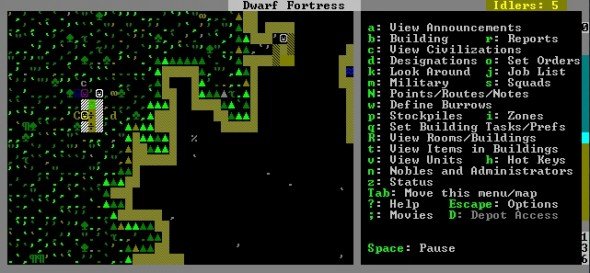
Dwarf Fortress is an incredibly complex game of base building and Dwarvern survival (or more often lack of survival) of rendered in ASCII graphics. Following our recent diary about the game we spoke to co-designer Tarn Adams about the ups and downs of the game.
PC Gamer: Dwarf Fortress was once 2D. Was it a pain adding depth?
Tarn Adams: It was mostly a tedious slog, looking for every relevant (x,y) pair and adding a z, with some more difficult changes for fluids and cave-ins. The z-axis was added in part to alleviate some problems with fluids vs bridges, and I think it was definitely worth it, since we don't have to handle bridges and similar buildings as special cases now, and especially because we can make some really cool maps, even if the display doesn't handle them very well. There are still some bugs from the change though, a few years later.
PC Gamer: Did many prefer the 2D game? How did you coax them into digging vertically?
Tarn Adams: Yeah, a lot of people prefer the 2D maps, especially at first, although other parts of the game have moved on as well so it's difficult to go back to the old 2D versions. The 2D version had a very stratified river-chasm-magma setup, and a gamey progression of metal availability, which is appealing in its way. There were also specific mechanics like filling the chasm with magma and so on. The new maps generally have a fairly shallow grade, so digging downward is necessary to build an underground fortress, for the most part. For experienced players, digging deep is mostly encouraged by magma, which is a fuel source that frees up a lot of your need for lumber. People who are aware of the deeper dangers probably don't feel enticed to dig deeper, but the promise of finding something exotic down there probably entices newer players to try it out. There's a geology rewrite upcoming which might shake this up a bit, but we'll see.

PC Gamer: Did you have some idea of what you wanted players to discover if they continued digging downwards?
Tarn Adams: When you are in a 3D space, the old '1D' rivers/ chasms from the two dimensional plane suddenly become very sparse and hard to find (string in a haystack vs string on a table), so it was clear that we had to move over to larger 2D 'planar' features that would be struck almost inevitably if you dig downward. It took a while to get the basic ones up and we're still working on it.
Keep up to date with the most important stories and the best deals, as picked by the PC Gamer team.
PC Gamer: What interesting features would you still like to add to the depths?
Tarn Adams: Anything's fair game within reason, and it's just a matter of finding time and getting started. Aside from adding more critters and plants, we'd like to get better underground rivers (eg, ones that have current or that exit outside through a cliff face) and ruins linked to world generation down there, and we've got underground civilizations like those of the various animal peoples that aren't realised at all.
PC Gamer: Dwarf Fortress has a remarkable roster of bizarre and hilarious creatures. How regularly do you add to it?
Tarn Adams: Most recently we've been doing animals from the sponsorship drive, and the big April 2010 release had about 30 new underground critters. We've also done some night creatures recently. Adding critters is a bit of a project because the text definitions for them have become more and more involved. Gremlins are my favourite – stories based around “something has pulled a lever!” are fun to read. Zach (Tarn's brother and Dwarf Fortress co-designer) likes the bogeymen that appear at night to torment the adventurers
PC Gamer is the global authority on PC games—starting in 1993 with the magazine, and then in 2010 with this website you're currently reading. We have writers across the US, Canada, UK and Australia, who you can read about here.


